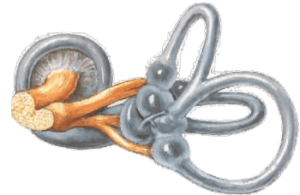Vestibular System
Cornell notes
✒️ Title: The Inner (Internal) Ear & Vestibulo-Cochlear Nerve (8th Nerve)
🌟 Cues
- External Ear, Middle Ear, Internal Ear
- Bony and Membranous labyrinth
- Cochlea, Semicircular canals, Vestibule
- Transmission of sound
- Vestibulocochlear (VIII) Nerve
- Lesions affecting hearing and balance
🗒️ Notes
- External, Middle, and Internal Ear: The ear is divided into three parts. The inner ear, also known as the labyrinth, lies within the petrous portion of the temporal bone.
- Bony Labyrinth: A cavity in the temporal bone filled with perilymph, consisting of the cochlea, vestibule, and semicircular canals.
- Membranous Labyrinth: A series of sacs and ducts filled with endolymph, including the cochlear duct, utricle, saccule, and semicircular ducts.
- Cochlea: A spiral-shaped organ responsible for hearing. It contains the organ of Corti, the primary auditory receptor. The cochlear nerve transmits sound information to the brain.
- Vestibular Organ: Includes the utricle, saccule, and semicircular canals, which help in balance and orientation by detecting head movements.
- Vestibulocochlear Nerve (VIII): Composed of two parts: the cochlear nerve for hearing and the vestibular nerve for balance. It enters the brain at the pontomedullary junction.
- Sound Transmission: The stapes vibrates at the oval window, transmitting sound waves through the cochlear fluids (perilymph and endolymph) to stimulate hair cells in the cochlear duct.
- Lesions and Disorders: Cochlear lesions lead to tinnitus (ringing in the ears) and deafness. Vestibular nerve lesions result in vertigo and nystagmus (involuntary eye movements).
📝 Summary
The inner ear, located within the temporal bone, is responsible for hearing and balance. It consists of the bony labyrinth filled with perilymph and the membranous labyrinth filled with endolymph. The cochlea processes sound, while the vestibular organ, including the utricle, saccule, and semicircular canals, maintains balance. The vestibulocochlear nerve (cranial nerve VIII) transmits sensory information for hearing and equilibrium. Lesions of this nerve can cause auditory and balance disorders, such as tinnitus, deafness, vertigo, and nystagmus.
🗃️ Recall
⭐ Rate lecture ease
5/5 - (4 votes)

